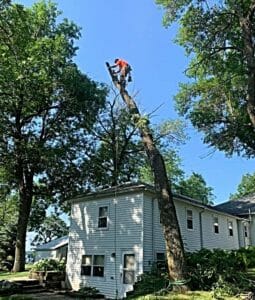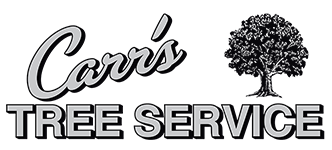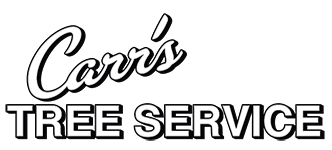High winds, ice and snow put tremendous pressure on trees growing near houses or power lines. With the high winds, rain and even snow a few weeks ago passing through the area, you may see damage to your landscape, including broken tree trunks and branches all over you (or your neighbor’s) property.
“Storm cleanup is often when many property owners crank up their first chain saw,” notes Tchukki Andersen, BCMA, CTSP* and staff arborist for the Tree Care Industry Association. “And, not surprisingly, they sometimes hurt themselves. Untrained property owners often attempt to remove large broken tree limbs from their property. Many of these accounts end unfavorably, often with serious injuries or even death.
For homeowners thinking of handling post-storm work themselves, here’s a primer on safe tree and brush removal:
First, if a utility line is down:
- Do not approach. Assume any downed line is energized.
- Call the utility company immediately.
- Avoid touching anything near the downed line and make sure nobody goes near the line. Contact with energized lines can result in electrocution.
- Be aware that downed power lines can be hidden in brush and foliage. Play it safe; call a tree care professional.

Second, when deciding whether to try removing a tree or large branch yourself:
- Consider the size and location of the tree. If the work requires you to leave the ground or if the tree is more than 20 feet tall, call a tree care professional. Do not attempt any tree work from a ladder!
- Examine the shape and lean of the tree. Inspect the trunk for decay, weak spots or hanging limbs and look for any metal or concrete in or around the tree. If any of these features are present, the tree may be unstable and extra precautions need to be taken before removing the tree.
- Carefully inspect the tree and the surrounding area for anything – utility lines, structures, vehicles, shrubs – that might interfere with the removal of tree pieces.
- Note other people in the area, particularly children. You don’t want anyone to wander near the drop zone.
- Even small trees bent under tension can be extremely hazardous. Do not cut wood that is under tension (one or both ends are trapped under something).
- Ask yourself, “What will happen when I cut this branch/tree?” Consider all the possibilities.
- Plan an escape route from the falling tree or tree part before cutting.
- Do not use a chain saw for tree removal unless you have years of experience. Even tree care pros face risk of injury using chain saws. Tree and branch removals are very unpredictable. Don’t take unnecessary chances!
- If you have any doubts, bring in your local tree care professional to handle the post-storm cleanup.
Third, consider hiring a tree care professional:
For safe and efficient post-storm work, hire a tree care professional with the experience, expertise and equipment to safely take down or prune damaged trees. Additionally, tree care pros should carry liability insurance.

